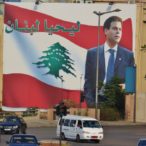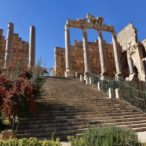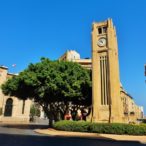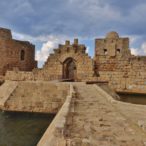Lebanon
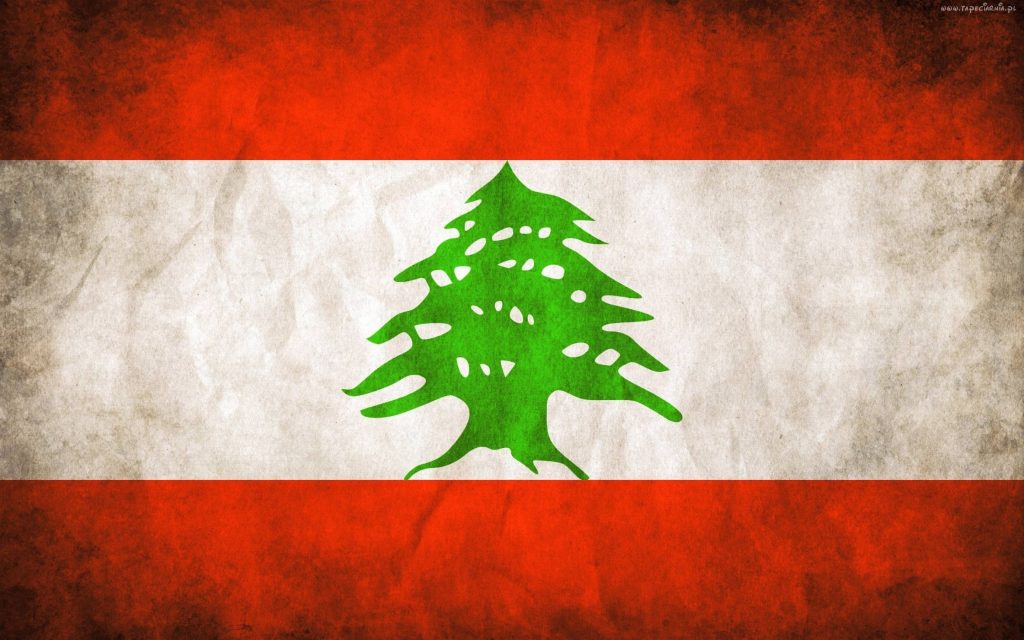
Official name: Lebanese Republic
Population: 6 000 000
Area: 10 452 km²
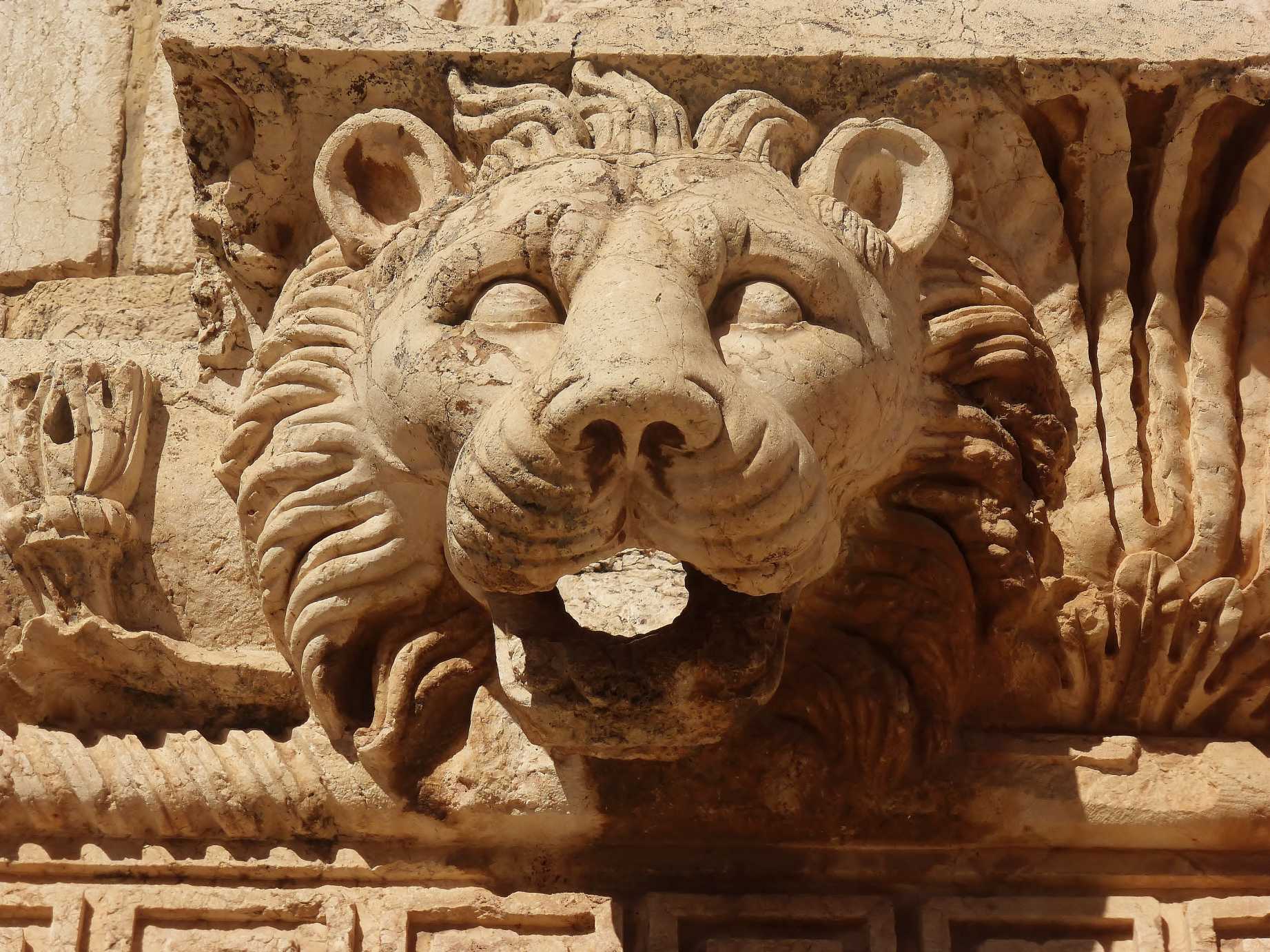
Gallery
Tourist attractions of Lebanon, Lebanon – the present times, history of Lebanon
Tourist attractions of Lebanon
Lebanon is a small country occupying just over 10.000 km² what means that it is almost 8 times smaller than than tiny Czech Republic. Nevertheless, in such a small area there are many interesting sights and natural beauty worth getting to know. Because of the small size a lot of tourists come to Lebanon only for one week, even though in my opinion an active traveller could spend there two or even three weeks without getting bored for a single moment.
Lebanon is located in Western Asia by the Mediterranean Sea and it is bordered by Syria and Israel/Palestine. The first attraction is the capital itself – Beirut which for a long time was off limits to tourists because of the its turbulent history. The most pleasant place in Beirut is the coast with its few kilometre promenade called Corniche and where people jump from the rocks into the sea. I went there many times at different times of a day to enjoy the sea breeze and a have a break from the noise of the city. In Beirut, there is also a Christian district of Achrafieh , Hamra shopping district, the historic centre with a beautiful clock tower and small but interesting streets near Hamra and Gemmayze. Although Lebanon is officially a Muslim country, Beirut certainly can’t be compared to the typical Arab cities such as Tangier or Marrakech. In Beirut some women run in tight clothes and they don’t wear head scarves while Muslim women wrapped in black sheets are a rare sight in the streets. Whilst in Beirut it is also important to not to overlook a very interesting National Museum.
Travelling north along the sea we should definitely stop in the beautiful coastal town of Byblos, which has been continuously inhabited for over 7000 years. Today, apart from nice views there are also interesting Roman ruins by the sea and many good restaurants. Not far from Beirut there is also a shabby town of Jounieh which exists on the map because it is the Lebanese capital of striptease and therefore a tourist destination of “religious” Saudis. However, in Jounieh there is also a cable car that leads to the top of Harissa where there is a huge, 15-ton statue of the Virgin Mary. Going further north I reached the Arab city of Tripoli which is very interesting because it has an impressive fortress on the top of the mountain, a traditional bazaar, traditional hammam (bath house) and the Mamluk period architecture. Although Tripoli is shrouded with a propaganda of fear I sincerely recommend this city and I consider it to be one of my best Lebanese experiences. Whilst in Tripoli I boarded a 40 year old Mercedes in which I felt like in a black-and-white film and roaming between palm trees and the chaos of the Arab town I arrived to the port of Al-Mina. Among many things there is a playground on the island, a restaurant and a non-functioning lighthouse which hasn’t worked since Israel invaded Lebanon.
The road south along the coast led me to the town of Sidon where on a small island there is a castle built by Christians and nearby there is an old Arab architecture, traditional bazaars, narrow streets and mosques. Sidon was one of my favourite places. Then I drove to the town of Tyre, which until recently was off limits to tourists because of frequent fighting with Israel and thus its military nature. Tyre is a packed with army, machine guns and barbed wire port town which is under control of Hezbollah but from the point of view of tourism it is very attractive because it has Roman ruins by the sea and the world’s largest Roman theatre. Apart from that there is also a good fruit bazaar and a promenade by the sea decorated with palm trees. I was stopped by Hezbollah only twice.
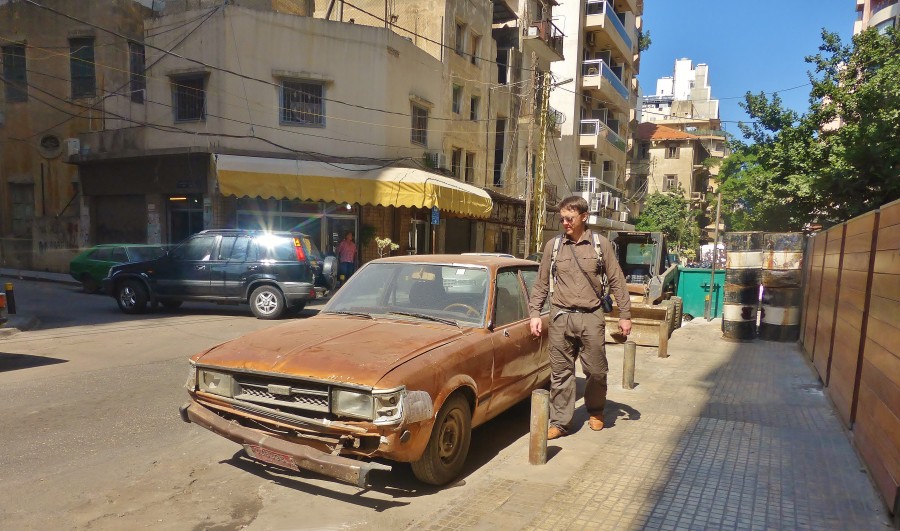
I admire the ‘vintage’ cars. Beirut, Lebanon.
The most pleasant memories I have from my trip to the Qadisha Valley because of the natural beauty and its Christian culture. I stayed in the mountain town of Bcharre and from there I went on an expedition into the valley where after crossing forest trails and interesting rock formations I reached ancient churches built in caves and on the edges of the mountains. Nearby Bcharre there is also a water cave and the Lebanese cedar reserve. Qadisha valley is free from barbed wire and machine guns because it is Christian. There is also Bekaa Valley nearby where first I saw the ruins of the city from the Ummayyyad period in the town of Baalbek. That small Shiite town controlled by Hezbollah is one of the most popular tourist destinations in Lebanon because of some of the largest Roman ruins in the world built in honor of Jupiter and Mercury. I was also in a town of Anjar close to Syria to see other ruins but no longer the Roman ones but from the Umayyad period built in the early eighteenth century. Then I spent the night in Zahle, close to the famous Lebanese wineries.
From Beirut I organized a trip to the Chouf mountains which didn’t disappoint me with their beauty. After adventurous hitchhiking I got to the nineteenth century Beiteddine palace where I saw traditional Arabian architecture finished to the highest standards and a huge amount of money. There are ornamented chambers, gardens, corridors and mosaics on the walls. Then, also by hitchhiking I went to the historic town of Deir al-Qamar where I saw the Ottoman architecture surrounded by beautiful views and at the end I got to the cedar reserve.
Along the way I visited a few other places such as Jezzine where I saw a large canyon and I also went to smaller villages of minor importance to tourists. Among the many sights that I saw I enjoyed the war museum in Mleeta because it was built on top of the same mountain where fierce fighting between Israel and Hezbollah took place. To me, a tourist attraction in Lebanon were also Arabic sweets and hitchhiking.
Lebanon is a small and very interesting country where in a small area tourists can experience interesting adventures with a thrill. I recommend this country and I wish happy journeys to all.
Lebanon – the present times
Economy
Lebanon’s economy is growing but at the same time it is very delicate because of the unstable political situation and internal groups which are hostile to each other. This situation means that it is hard for Lebanon to build a robust private sector and ensure rapid development. The unstable political situation, bureaucracy and lack of accurate definition of economic rules also make it hard to obtain wealthy domestic and foreign investors. In addition, the Lebanese economy is weakened by war in neighbouring Syria because Lebanon suffers directly from its results.
Lebanese economy is based on services which contribute to 75% of the overall demand and on the banking sector that supports this demand. But these are not the only branches of the Lebanese economy. In addition to banking services the Lebanese GDP also consists of agriculture, production of chemicals, transport equipment, construction and energy. Apart from that Lebanon has a very important port in Beirut which was closed during the war but there are active plans for its expansion and work in a full swing. Lebanon’s GDP per capita amounts to nearly $18,000 but there are predictions that it will soon reach $ 20,000 and because of that, despite neighbouring Syria it would become one of the strongest economies in the region. Furthermore, Lebanon has a competitive market and a rich tradition of trade. There are also no restrictions on foreign exchange and there is free movement of capital. Lebanon has also a huge, over one million diaspora around the world and due to that fact Lebanese people every year send more than $8bn to their families which in turn makes up 20% of the Lebanese economy. Unemployment stands at 14% but unfortunately it reaches 24% for the 15-24 age group.
Education
Education in Lebanon is compulsory from 6 to 14 years of age and teaching is in Arabic and compulsorily in French or English. In the beginning it is worth to mention that private education in Lebanon is popular and that two out of three students are educated privately what raises the level of education in the country.
Education begins in a kindergarten at the age of 3-4 years old where children are taught to adapt to schools, interaction with teachers, acquisition of basic knowledge and communication with others. According to the World Bank about 67% of children in Lebanon go to kindergartens every year of which 80.3% of goes to private kindergartens. Then there is the basic level which is used by about 97% of boys and 94% girls, of which almost 67% go to private schools. Unfortunately basic education finishes only 81.5% of children and 60% of them go to private schools and the majority are girls. Three-year schools educate only 74% of students and at the end there are economy and social subjects exams. However, in 2014 the minister of education passed all students who joined the exam regardless of whether they really passed or not. Unfortunately, when looking at the real results in Lebanon just over 52% of students, of which only 39% are women graduate from secondary schools.
That way Lebanon has been named the “School of the Middle East” as it is sometimes referred to but in spite of such facilities in 2013 The World Economic Forum ranked Lebanon 109th in the world in terms of quality of learning and it put the country on the 40th place in terms of mathematics and social sciences. Another organization ranked Lebanon on the 58th position and after the tests conducted in mathematics and social sciences in secondary Lebanese schools students won only 433 and 449 points from each of the subjects, despite that the global average is 500.
Lebanon has 41 universities, of which the most famous is the Lebanese University, American University of Beirut and the University of St. Joseph. Most of the 41 universities in Lebanon, both public and private teach in English and French. According to the World Bank in 2013, 48% of high school graduates enrolled into higher education while 30% seeking employment had university degrees.
The average level of literacy in Lebanon in 2015 stood at 93.9%, of which 96% for men and 91.8% for women.
The crisis in the neighbouring Syria put huge pressure on the educational system in Lebanon because there are about 400,000 Syrian children of school age, of whom only 30% receive education. In addition to the huge numbers there is a problem with integration because Lebanese children are taught in English and French while Syrian children only in Arabic. In 2014 there were 104,000 Syrian students in Lebanese schools and by 2015 that number increased to 200,000.
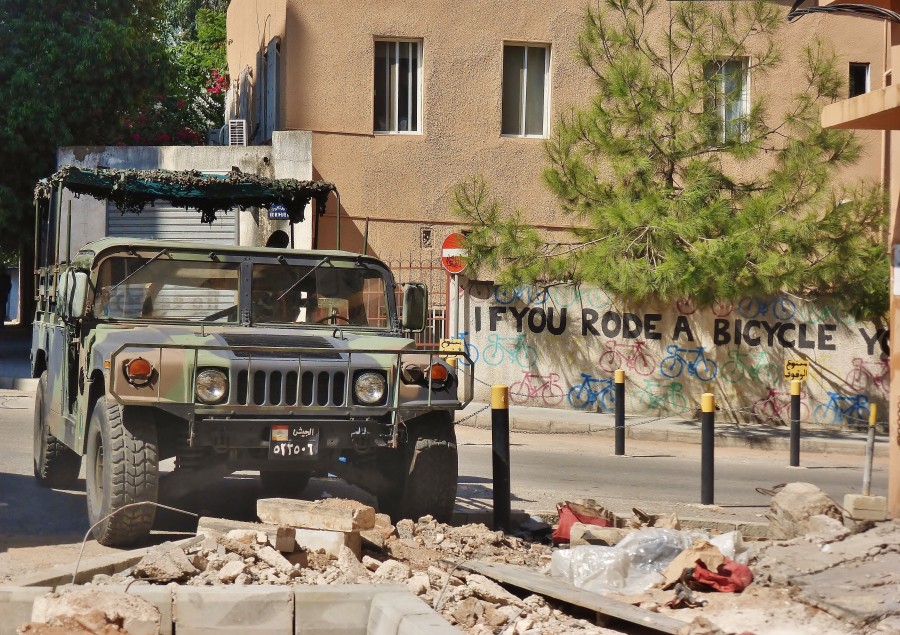
The military presence, barbed wire, concrete blocks and revolutionary slogans on the walls are part of Lebanon’s everyday life.
Health
Before the civil war in 1975 which was fought between Muslims and Christians health service in Lebanon was one of the best in the region. However, after the war the situation has changed completely for several reasons.
The Lebanese health ministry is extremely underfunded, what means that treatment has become inefficient for the system. Today only one in three Lebanese has health insurance what means that many families have to pay for their treatments thousands of dollars which they simply do not have. On February the 3rd 2014 Hussein Qataya died outside the hospital because there weren’t any free beds in the intensive care and he was not the first nor the last. For the same reason in front the hospital door also died Mumin al-Mohammed and Mohammed Taha and many others whose families did not have money for the treatments. Due to the lack of financing of the health care system for the past 20 years the Ministry of Health has funded 27 hospitals but half of them closed due to lack of funding and poor management. This means that out of 1,500 hospital beds in public hospitals only 300 can be used. For a comparison the are 175 private hospitals in Lebanon which have about 14,500 beds and they have a lot higher standard of treatment and better equipment too.
According to the WHO in 2006 the Lebanese government spent $400 million on a health service, even though that in order for the health system to function normally it needs $ 686m. This means that the remaining $286m was either paid by the small and poor Lebanese nation or as stated above people died in front of hospitals because doctors refused to treat them. Lebanese The Ministry of Health urged to complete the privatization of the health service and transfer more and more patients to the private hospitals. For a comparison in 1971 only 14 private hospitals had contracts with the government for the treatment of patients from the public health while in 2000 there was already 134. According to the patient transfer agreement the Ministry of Health should pay 90% of all medical bills for their patients but this is only a theory because the Lebanese government has not paid for a long time what meant that private hospitals now also have huge financial problems and are forced not to accept any more patients. Therefore the government first got rid of the problem by sending its patients to private hospitals just to later deliberately to not to pay for them, what still does not change the fact that 2/3 of the population of Lebanon must either enter hospitals with cash in their hands or die at the front door.
Another problem is that hospitals in Lebanon are facilities focused on business and because of that each hospital has its clients. First there are those who have links with politics, military, police and those who have private health insurance. WHO conducted research on that and found out that among the 2700 people waiting for kidney treatment 1200 of them were employed by the government and they had government insurances, another 100 were paid by the army, 400 had private insurances and 1000 paid by themselves. This means that in Lebanon there are no patients but customers and medical services are for the chosen ones.
Another problem of the Lebanese health lies in a religious affiliation. Let’s imagine that in Poland there would be separate hospitals for Catholics, Protestants and Orthodoxes and that a Catholic could die in front of a Protestant hospital because he is a Catholic. That’s the way it is in Lebanon and it is not only a division between Muslims and Christians but also between Sunni and Shia Muslims. Thus for example; the Sunni Hariri Clinic controlled by the Sunni Future Party and Rasool al-Azem hospital controlled by the Shia Hezbollah have spread the message that they accept everyone regardless of religious affiliation. However, after a deeper digging into this topic both hospitals admitted that despite the fact that their help is for everyone they always give priority to people of their own religion. The Hezbollah hospital said that all guerrilla fighters who fought in the ranks of Hezbollah and their families are ‘their people’, while Sunni hospital said that every member of the Party of the Future will always be a priority for them. A good example is the 24 year-old Shia Muslim Hamza Shahrour who had a heart attack and who lived very close to the Sunni Hariri hospital. Unfortunately Hamza did not have a private insurance and also didn’t have one thousand US dollars to pay the doctor. After Hamza died his mother said that she wished her son had been Sunni because then he would be still alive.
From the political perspective it does make sense because in the Lebanese parliament there is a fierce battle between the Sunni government and the Shia opposition.
Another problem is in the location of Lebanon. During the war in Iraq Lebanon was forced to treat Iraqis but when the war broke out in Syria more than a million Syrians immigrated to Lebanon and killed the already highly indebted Lebanese health system. A lot of Syrians are not treated at all simply because there is no money for it. The government pays only 75% of the most serious treatments and always with a 3-month delay. This means that the existing on the edge of bankruptcy private hospitals close their doors and give up on asking asking for the remaining 25% because it simply doesn’t make sense. On the other hand public hospitals have to accept Syrians as well as the Lebanese but those are very few and they do not have enough equipment.
The average life expectancy in Lebanon is nearly 80 years. Neonatal death is 11 per 1000 births and children’s death under 5 is 12 per 1000. The number of hospital beds per 1000 people is 3.5 and maternal mortality during natural childbirth is 15 per 100000. (For a comparison, the maternal mortality rate in Poland is 3 per 1000 and in the UK it is 9 per 1000). The main causes of death are heart and lung diseases which is not at all surprising taking into account the plague of smokers in Lebanon. Furthermore child malnutrition has become a scourge in the Syrian refugee camps who despite poverty multiply like rats. According to the World Bank 99% of Lebanese have access to clean water but on the other hand only half are connected to the sewage system and not all people believe that the water is clean. The poor drink tap water and others buy it in large containers. In addition the sewage system in Lebanon was destroyed by Israel during the 2006 war but later the water system was rebuilt by Western investors and by Hezbollah.
Culture/Religion
Lebanese culture has been shaped by the turbulent history of this small country and by people of many cultures who subsequently occupied it. Lebanese culture was being created for thousands of years due to the fact that it was conquered by Phoenicians, Assyrians, Persians, Greeks, Romans, Arabs, Christians, Ottomans and French. Each of the reigns of the successive civilizations left a lasting mark on architecture, art, literature and the national cuisine. That is why whilst traveling around Lebanon today we can see Roman ruins, French colonial architecture, mosques, churches and the popular with tourists Arabic palace of Beiteddine. For example, the city of Sidon in my opinion is unique because there are examples of Arabic and Italian architectures and there is also a great see castle built by the Crusaders.
According to the officially advertised, globalist doctrine we are being assured that all Lebanese are the same and that they all have the same culture but after 3 weeks of traveling around Lebanon I think this is nonsense. Lebanon is about 60% Musli and 40% of Christian and there was a civil war between them in 1975. In addition, Muslims are divided into Suni and Shia (Hezbollah) who are constantly at conflict with each other. A common thing for all Lebanese people is that they all speak Arabic and that French is recognized as a second language. Additionally in Lebanon public holidays are both Muslim and Christian. Besides, the geographic location of Lebanon is also very important. Lebanon, as a Mediterranean country located in Western Asia it is considered to be the gateway to the Middle East. On the other hand by Arabs it is considered as the entry to Europe. This fact is also reflected in much freer customs in Lebanon than it is in other countries of the region. Women dress in the European style, often in short skirts and high heels walk with men by hand. Women in Lebanon have also incomparably more freedom and more rights than in other Arab countries.
Very popular, not only in Lebanon but also around the world is Lebanese food which is a traditional Mediterranean cuisine like the ones of Egypt, Syria, Turkey, Greece and Cyprus. Kebab and schawarma are of course very popular but also meat dishes such as kibbe, with ground lamb and rice or thin bread and salad. Very popular in Lebanon are also grilled fish with meat and hummus and other minced, seasoned vegetables soaked in olive oil, such as for example mezze. The popular drinks are beer and Lebanese wine which among many countries is exported to France. Food in Lebanon also has social significance because it is the basis of family life. This means that even without a carefully prepared dishes Lebanese people are always happy to eat together, provided they have enough hummus to dip their pita bread, vegetables and grilled meat.
When it comes to sport football has conquered all the Arab countries and therefore it is the most popular sport. But in Lebanon popular are also: basketball, rugby, winter sports, weightlifting and adventure sports such as sailing, rafting, caving and mountaineering. By the sea in Beirut women often run.
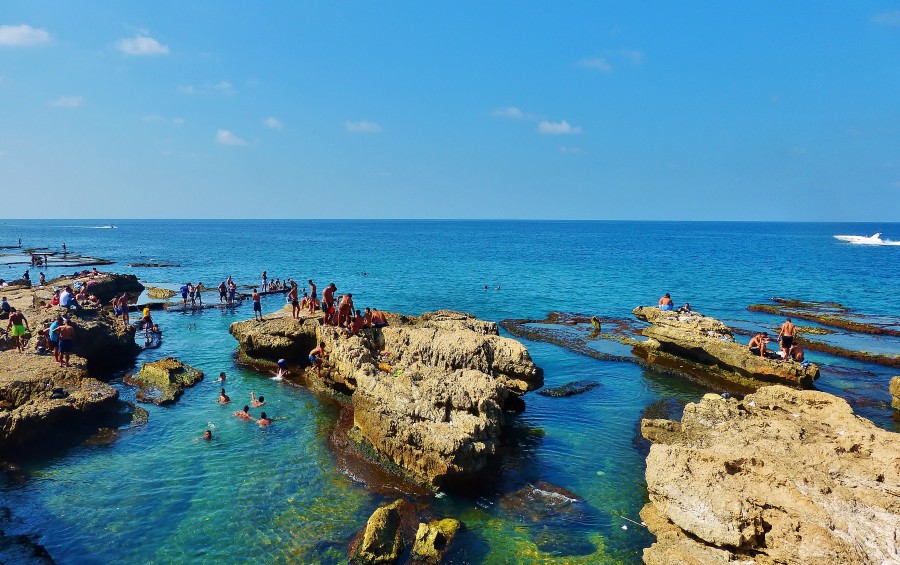
Rock formations and a place for swimming by the Mediterranean Sea. It is probably the most enjoyable place in Beirut. Lebanon.
Media
Freedom of the press and freedom of expression in Lebanon is guaranteed by the constitution what does not have its reflection in everyday life. Although the Lebanese press is freer than in other Arab countries this doesn’t mean that journalists are safe. After the war began in neighbouring Syria attacks on journalists have become more frequent because writing the truth about Lebanese politicians and foreign countries is illegal. Newspaper, book publishing companies and of course radio and television stations are controlled by the government which sues journalists for promoting friendship with Israel and for insulting “religious and ethical values” and political and religious broadcasts must have the permission of the government.
On the other hand Lebanon was the first country in the Middle East that allowed private radios, newspapers and television stations but if we look deeper we will see that they are in the hands of influential politicians who publish materials in accordance to their political and religious beliefs. Therefore regardless of whether the media are private or run by the state, each time the published materials are used as tools of political control and they are also subjects to censorship by the state body called the Censorship Bureau. Furthermore, distribution of press materials depends only on political connections that’s why popular information channels used by the Lebanese are private blogs and to a certain degree also Facebook and Twitter.
On the press freedom out of 180 countries and territories in 2013 Lebanon was on the 101st place, in 2014 on 106th in 2015 already on 98th place. This means that when it comes to freedom of press and expression Lebanon (beside Kuwait) is recognized as the leader in its region but not because the media are free but because every Muslim country is more enslaved. In countries such as Saudi Arabia or Pakistan there are frequent accusation of “blasphemy against Allah” so comparing to those countries Lebanon is indeed “better.”
Environmental issues
I think if I wanted to accurately describe all environmental problems of Lebanon I would have to publish a book on the subject. Unfortunately Lebanon is a country of enormous ecological problems. The first one is the enormous air pollution which is most evident in Beirut. Poisonous gases come out daily from cars and industrial plants without any limitations. This means that without introduction of right solutions such as installing filters on silencers or introduction of electric buses sooner or later Lebanese people will suffocate themselves in their own stench. I remember that when I was in Beirut walking by the road was impossible because I couldn’t breathe, while above the cars stuck in the traffic there was a black fog. In Beirut it is so bad that above motorways during traffic sun rays do not penetrate the air. Investment in environmental protection means more millions of dollars spent but in Lebanon it is unlikely to happen.
Pesticides are used on fields that poison the soil, they poison fruit and vegetables and as a result they also poison people. Pesticides and gases poison the air and they contribute to the destruction of ozone and acid rain which further contaminants soils through their acidification. As a result of this practice soil in Lebanon ceases to be suitable for use and year after year it shows that its ability to grow plants gets smaller. Today only 12% of the area of Lebanon is suitable for agricultural land. Still however, this problem arises because the next big problem lies in deforestation for agriculture that kills plant and animal species. Then the new agricultural lands are poisoned with pesticides and that way the situation is repeated endlessly because in order to cut down forests and adapt them into agricultural land first heavy equipment must be used which destroys the superficial layer of the earth. It is a vicious circle also because grazing farm animals eat plants farmed on a poisoned land faster than they are able to grow. This means that such demand creates even a greater deforestation and poisoning. It seems that wild animals have somewhere to escape but unfortunately not because poaching is another big problem and without the exception of 54 endangered species which live in Lebanon.
Another huge environmental problem is not as much in fishing itself but in a mass extermination of fish. At some point I wondered why all fishermen who catch fish every day in Beirut can never catch anything. Well, because Lebanese fishing boats go into the sea and tow kilometer long nets behind them what means that they cleanse the sea from life. Because of that they catch not only fish which can be used as food but also all other sea creatures, including the 17 endangered marine species. Unless the government of Lebanon does something about it then soon Lebanon will have a dead coast. In addition, the industrial wastewater and common garbage are thrown into rivers and into the sea. Then all those wastes are eaten by fish which later also poison people as their food.
Although Lebanon enjoys enough rain the water supply system is very bad and if the Lebanese sewage system does not get modernized then by the year 2020 there will be very serious water shortages. Pipes leak what means that a large part of drinking water either evaporates or flows into the Mediterranean Sea. The problem of water scarcity and the problem with the sewage system would certainly plunge not only private homes but also agriculture. The additional problem lies also in a poor quality of drinking water and its low pressure, what means that people who live on high floors don’t have water at all and about half of Lebanese people buy water privately. Only because of poisonous water the common diseases in Lebanon are typhoid, viral hepatitis and dysentery.
The water crisis is even more difficult because Lebanon has already one million Syrians and their number is growing all the time. For that reason there is an increasing demand for water what further overloads the sewage system and creates land and air pollution. The invasive immigration of Syrians makes the survival of Lebanon questionable and not only economically but also environmentally.
As usual, ignorance and greed will sooner or later bear the fruit of death which will have to be eaten by innocent people.
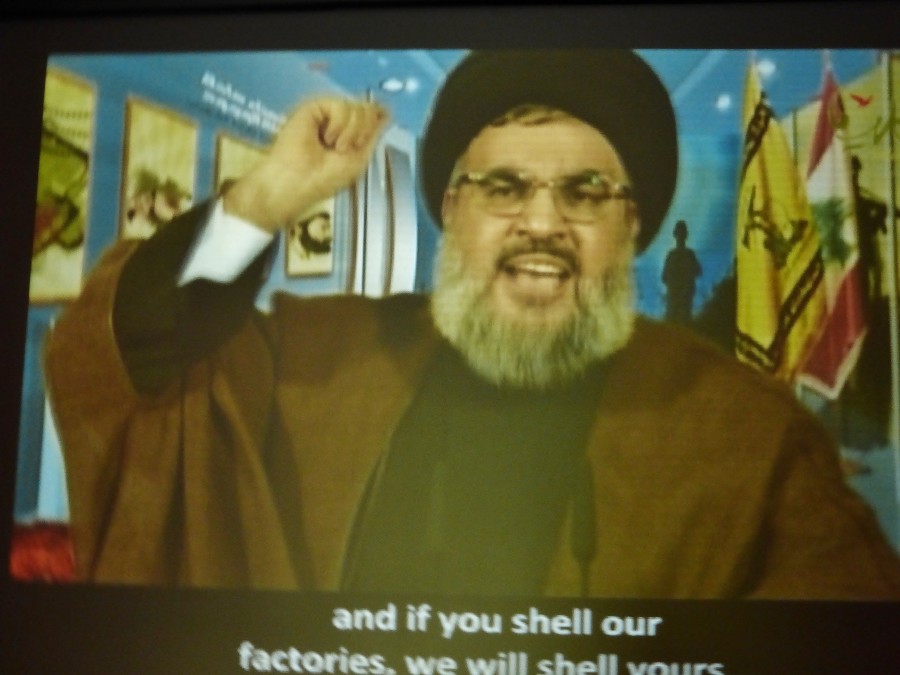
The Hezbollah leader sends ‘Christmas greetings’ to Israel. Lebanon.
History of Lebanon
Creation of a country is just about drawing lines on the map, but creation of a nation is an ongoing struggle of building people in your own image, even if a country ceases to be a nation.
From 1516 to 1918, when the First World War finally ended, Lebanon was under the Ottoman rule. The Ottoman Empire was not only the Muslim empire, but also an economic empire. This means that Christians could practice their religion, but they were burdened with huge taxes, what made it impossible for them to earn a fortune. Although today’s Turkey likes to deny it, from time to time the Ottoman Empire organized massacres of Christians. The end of World War I was a period of changes on the map of Europe and the Middle East, what for Lebanon meant a change of its master, from the Turkish one into the French, and a very slow and stormy path to independence.
With the defeat of Turkey in World War I the Ottoman Empire ended too, and this meant that Lebanon and Syria were under the French control. The French connected Lebanon with the neighbouring provinces of the Ottoman Beirut and Damascus, thus creating the “Greater Lebanon”. Not all Muslims liked it, because they were more attached to Syria, but years later, in 1926 the new Republic of Lebanon was established and a preliminary constitution was written, of which elements are in place today. Two of the most important points of the constitution were the territorial autonomy and a peaceful existence between different groups.
However, it was in 1943 when Lebanon proclaimed its independence from France, to which France replied with imprisonment of President al-Khoury, the prime minister and several other ministers. The resistance of France to recognize the independence of Lebanon and the arrest of Lebanese leaders resulted in riots and strikes all over the country, and only after the political intervention of the US and the UK, France granted Lebanon its independence. Soon the parliament hung the flag with a cedar tree instead of the French one, and a compromise was agreed between Christians and Muslims. Christians gave up the defense of the West against Muslims, and Muslims resigned from the union with Arab countries. This meant that in the event of war in the Middle East, Lebanon would remain neutral. In 1948 the Zionists established the State of Israel, what resulted in a new, endless problems for the entire region and the whole world, and Lebanon had to face the mass immigration of Palestinians.
Unfortunately the so-called “independence” was just the beginning of all problems. The mainstream history does not mention this, but in the early 50’s Christians in Lebanon were the majority, and that’s why Lebanon lived in peace. Unfortunately the Zionist Israel declared a secret war against Christians and began to inflame extreme Islam, what Muslims accepted without any problems. As a result of Jewish meanness the “religion of peace” once again showed its true face, and in 1958 Lebanon exploded with the first civil war between Muslims and Christians. The mainstream history writes about the war drums played by the Egyptian president, but it was Israel that was behind the civil war in Lebanon, in order to ensure the entry of the US troops.
17 years later the Zionists came to a conclusion that not enough Christians were killed during the war, and that’s why they started inflaming hatred again, and in 1975 another civil war broke out. As a result of that Muslims massacred Christians once again, and only a year later, in 1976 the Syrian army entered Lebanon and occupied the whole country, apart from the south. At that time Israel had provoked the attack of the Palestinian Liberation Organization (PLO) on Israel, so that in 1978 the Jews could have a pretext to attack Lebanon and start a conflict with Syria. This was very handy for Israel, because it led to the occupation of the strategically important Golan Heights, and allowed Syrians the brutal removal of Christians from East Beirut.
Israel attacked Lebanon again, this time in June 1982, and within three days its army reached Beirut. Meanwhile the Christian president-elect Bashir Gemayel was murdered in Lebanon, and Jews once again massacred Palestinians, this time in the camps of Sabra and Shatila, and then they lied to the public that apparently Christians did it. In the meantime the US embassy and the military bases of Israel and France were blown up. Despite the peace talks which were just a theatre for the media, the Israeli army didn’t leave Lebanon until 1985 and the Israeli government began its “iron fist policy” in the southern Lebanon. For this reason, today in the southern city of Tyre there is very heavy presence of the Lebanese army and the Hezbollah, what I saw whilst walking around the town. At the same time the US prophylactically attacked Lebanon from its ships, Israel sparked conflict between Sunni and Shia Muslims, and due to a turbulent occasion it killed more Palestinians and more Christians. Syria did not agree to withdraw its troops, what resulted in more conflicts.
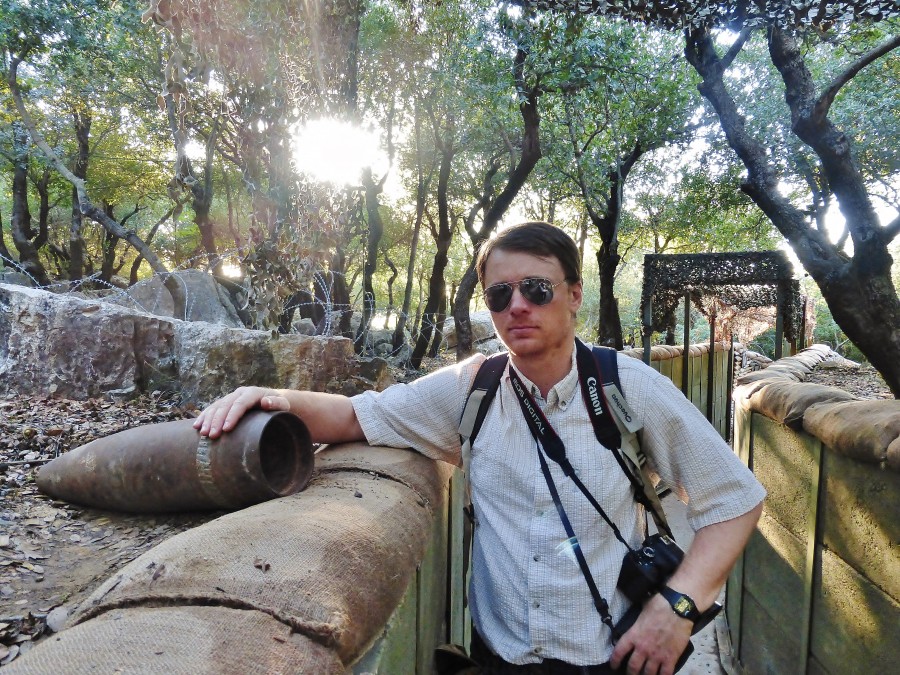
I like bombs. I’m at the Mleeta museum run by Hezbollah. Lebanon.
Subsequent years experienced creation of hostile governments in small Lebanon, and as a result of that the Prime Minister Michel Aoun declared war on Syrian troops, what only caused Lebanon to find itself under Syrian control for the next decade. The next fights and the assassination of the President became the norm. No one was safe. During the Gulf War the US gave Syria a free hand to remove the Prime Minister Aoun and to disarm all the military groups, what greatly benefited Hezbollah. Meanwhile Hezbollah has grown stronger and gained seats in the Lebanese Parliament, whilst the economic situation was getting worse. This time, already without any murders the Prime Minister Harami announced his resignation and the new elections were boycotted as unfair. The next Prime Minister Rafic Hariri promised new jobs and new Lebanon……..and who knows, maybe even free space travel for every Lebanese.
Travel reports
Map
Location
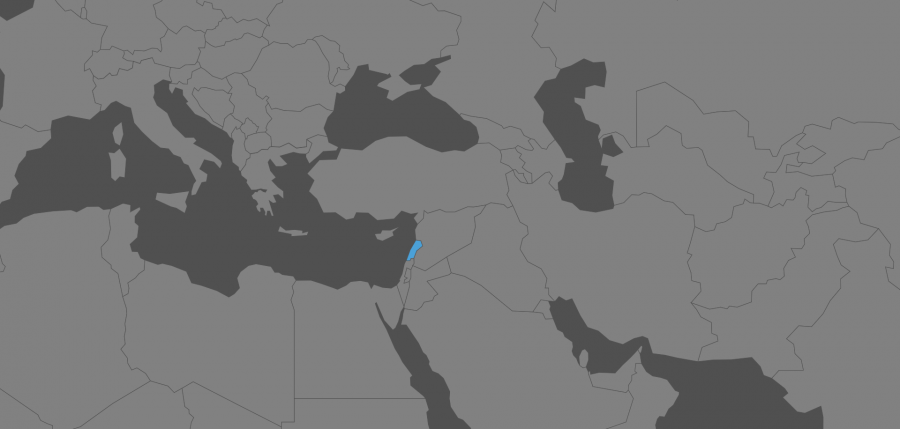
Practical information
Tourist visa: at the Beirut airport I was given a free tourist visa for 30 days and this visa can be easily extended in Lebanon for three months. Israeli visa makes entry into Lebanon impossible. Immigration worker asked me about my purpose of visit, if I knew someone in Lebanon and twice if I’ve ever been to Israel.
Safety: I spent three weeks in Lebanon. I travelled to the furthest corners of the country day and night, along the coast to towns filled with barbed wire and machine guns, to places such as Tyre, Mleeta or Baalbek where I felt readiness for war, I was stopped by Hezbollah 2 times and within the tourist attractions of my trip I also took part in a riot in Beirut where police fired tear gas. I was close to the border with Syria and I never had a problems and that’s why I recognize Lebanon as safe. My advice however is that anyone who chooses to visit Lebanon should check the safety as the situation especially in the Middle East can change quickly. I think that if Israel doesn’t attack Lebanon or if there isn’t another civil war it is safe to go, even though in certain places I had the same feeling which I had previously experienced in Pakistan – as if something was going to be blown up. We should also certainly not believe the British Foreign Office which specializes in scaring tourists with horror stories.
Getting around the country: getting around Lebanon is very well organized. Lebanon is a small country with a well-developed network of buses that run along the coast and deep into the country towards Syria. In Beirut there are three main bus stations and each of them serves a particular direction. (Nothing easier). In addition there are also taxis and hitchhiking which I deeply appreciate.
Prices (for 2015 when £ 1 = 2,100 LBP): Prices in Lebanon are affordable but I would not call Lebanon a budget destination as it is with Nepal or Cambodia. The local currency is the Lebanese pound although Arabs call it Lebanese lira. In addition to the local currency unofficially US dollar is also in circulation. The rate from the end of 2015 was 1USD = 1500LBP.
For the cheapest bed in a shared room in Beirut I paid $17 while in Tripoli and in Bcharre I paid only $10. The most expensive places are always those that are rarely visited such as Zahle and Anjar. Over there the cheapest rooms cost least $50 though I found one for $30. Shawarma and kebab which are very popular in Lebanon cost on average 5000 lira, Lebanese pizza costs around 2-3000 lira while taking into account all the numerous drinks and desserts as a big minimum a budget tourist has to spend at least 10,000 lira (£5) on food per day.
Urban transport costs 1000 lira while transport from Beirut to Tripoli was 4000 lira and between other cities it ranges around 3-6000 lira. Additionally tourists should add the costs of entry to the museums and the costs of souvenirs which can cost $10 or as much as one’s heart desires.
In my opinion a tourist travelling through Lebanon on budget should spend at least $40- $50 a day and if someone spends only $30 or less then in my opinion such traveller does not go for a trip for a survival camp. Tent always helps to reduce the travel expenses.
Climate: Lebanon has a Mediterranean climate which is characterized by long, hot and dry summers and wet winters. The coldest month is January when the temperature ranges from 5°C to 10°C and the hottest month is August when the temperature is between 18°C to 40°C. Lebanon is therefore a hot and a dry country and its winds can be very strong and cause sandstorms. 70% of annual rain falls from November to March and the least rainy months are from June to August. In winter heavy rainfalls cause local flooding, soil erosion and storms.



